1. Nagasiri R, Chitmongkolsuk S. Long-term survival of endodontically treated molars without crown coverage: a retrospective cohort study. J Prosthet Dent. 2005. 93:164–170.

2. Teixeira EC, Teixeira FB, Piasick JR, Thompson JY. An in vitro assessment of prefabricated fiber post system. J Am Dent Assoc. 2006. 137:1006–1012.
3. Maccari PC, onceição EN, Nunes MF. Fracture resistance of endodontically treated teeth restored with three different prefabricated esthetic posts. J Esthet Restor Dent. 2003. 15:25–30.

4. Zalkind M, Hochman N. Esthetic considerations in restoring endodontically treated teeth with posts and cores. J Prosthet Dent. 1998. 79:702–705.

5. Cheung W. A review of the management of endodontically treated teeth. Post, core and the final restoration. J Am Dent Assoc. 2005. 136:611–619.
6. Lassila LV, Tanner J, Le Bell AM, Narva K, Vallittu PK. Flexural properties of fiber reinforced root canal posts. Dent Mater. 2004. 20:29–36.

7. Genovese K, Lamberti L, Pappalettere C. Finite element analysis of a new customized composite post system for endodontically treated teeth. J Biomech. 2005. 38:2375–2389.

8. Fernandes AS, Shetty S, Coutinho I. Factors determining post selection: a literature review. J Prosthet Dent. 2003. 90:556–562.

9. Baldissara P, Di Grazia V, Palano A, Ciocca L. Fatigue resistance of restored endodontically treated teeth: a multiparametric analysis. Int J Prosthodont. 2006. 19:25–27.
10. Zarone F, Sorrentino R, Apicella D, Valentino B, Ferrari M, Aversa R, Apicella A. Evaluation of the biomechanical behavior of maxillary central incisors restored by means of endocrowns compared to a natural tooth: a 3D static linear finite elements analysis. Dent Mater. 2006. 22:1035–1044.

11. Ortega VL, Pegoraro LF, Conti PC, do Valle AL, Bonfante G. Evaluation of fracture resistance of endodontically treated maxillary premolars, restored with ceromer or heat-pressed ceramic inlays and fixed with dual-resin cements. J Oral Rehabil. 2004. 31:393–397.

12. Otto T. Computer-aided direct all-ceramic crowns: preliminary 1-year results of a prospective clinical study. Int J Periodontics Restorative Dent. 2004. 24:446–455.

13. Cohen BI, Condos S, Musikant BL, Deutsch AS. Pilot study comparing the photoelastic stress distribution for four endodontic post systems. J Oral Rehabil. 1996. 23:679–685.

14. Ross RS, Nicholls JI, Harrington GW. A comparison of strains generated during placement of five endodontic posts. J Endod. 1991. 17:450–456.

15. Lee HM, Hur B, Kim HC, Woo SG, Kim KH, Son K, Park JK. Effects of occlusal load on the cervical stress distribution : A three-dimensional finite element study. J Korean Acad Conserv Dent. 2006. 31:427–436.

16. Toparli M. Stress analysis in a post-restored tooth utilizing the finite element method. J Oral Rehabil. 2003. 30:470–476.

17. Park JK, Hur B, Kim SK. The influence of combining composite resins with different elastic modulus on the stress distribution of class V restoration: A three-dimensional finite element study. J Korean Acad Conserv Dent. 2008. 33:184–197.

18. Lanza A, Aversa R, Rengo S, Apicella D, Apicella A. 3D FEA of cemented steel, glass and carbon posts in a maxillary incisor. Dent Mater. 2005. 21:709–715.

19. Rosenstiel , Land , Fujimoto . Textbook of contemporary fixed prostodontics. 2001. 3rd edition. Mosby;216–229.
20. Cheong YK, Hur B, Lee HJ. A comparison of post and core techniques with finite element analysis. J Korean Acad Conserv Dent. 1996. 21:70–86.
21. Cormier CJ, Burns DR, Moon P. In vitro comparison of the fracture resistance and failure mode of fiber, ceramic, and conventional post systems at various stages of restoration. J Prosthodont. 2001. 10:26–36.

22. Butz F, Lennon AM, Heydecke G, Strub JR. Survival rate and fracture strength of endodontically treated maxillary incisors with different post and core system. Int J Prosthodont. 2001. 14:58–64.
23. Mannocci F, Ferrari M, Watson TF. Intermittent loading of teeth restored using quartz fiber, and zirconium dioxide ceramic root canal posts. J Adhes Dent. 1999. 1:153–158.
24. Rosentritt M, Furer C, Behr M, Lang R, Handel G. Comparison of in vitro fracture strength of metallic and tooth-coloured post and cores. J Oral Rehabil. 2000. 27:595–601.

25. Akkayan B, Gulmez T. Resistance to fracture of endodontically treated teeth restored with different post systems. J Prosthet Dent. 2002. 87:431–437.

26. Assif D, Oren E, Marshak BL, Aviv I. Photoelastic analysis of stress transfer by endodontically treated teeth to the supporting structure using different restorative techniques. J Prosthet Dent. 1989. 61:535–543.

27. Akkayan B. An in vitro study evaluating the effect of ferrule length on fracture resistance of endodontically treated teeth restored with fiber-reinforced and zirconia dowel systems. J Prosthet Dent. 2004. 92:155–162.

28. Dietschi D, Romelli M, Goretti A. Adaptation of adhesive posts and cores to dentin after fatigue testing. Int J Prosthodont. 1997. 10:498–507.
29. Hunter AJ, Flood AM. The restoration of endodontically treated teeth. Part 3. Cores. Aust Dent J. 1989. 34:115–121.

30. Pegoretti A, Fambri L, Zappini G, Bianchetti M. Finite element analysis of a glass fibre reinforced composite endodontic post. Biomaterials. 2002. 23:2667–2682.

31. Stricker EJ, Göhring TN. Influence of different posts and cores on marginal adaptation, fracture resistance, and fracture mode of composite resin crowns on human mandibular premolars. An in vitro study. J Dent. 2006. 34:326–335.

32. Oyar P, Ulusoy M, Eskitascioglu G. The element analysis of stress distribution of 2 different tooth preparation designs in porcelain-fused-to-metal crowns. Int J Prosthodont. 2006. 19:85–91.
33. Williams KR, Edmundson JT. A finite element stress analysis of an endodontically restored tooth. Eng Med. 1984. 13:167–173.

34. Cailleteau JG, Rieger MR, Rieger MR, Akin JE. A comparison of intracanal stresses in a post-restored tooth utilizing the finite element method. J Endod. 1992. 18:540–544.

35. de Castro Albuquerque R, Polleto LT, Fontana RH, Cimini CA. Stress analysis of an upper central incisor restored with different posts. J Oral Rehabil. 2003. 30:936–943.

36. Hayashi M, Takahashi M, Takahashi M, Imazato S, Ebisu S. Fracture resistance of pulpless teeth restored with post-cores and crowns. Dent Mater. 2006. 22:477–485.

37. Gu XH, Kern M. Fracture resistance of crowned incisors with different post systems and luting agents. J Oral Rehabil. 2006. 33:918–923.

38. Newman MP, Yaman P, Dennison J, Rafter M, Billy E. Fracture resistance of endodontically treated teeth restored with composite posts. J Prosthet Dent. 2003. 89:360–367.





 PDF
PDF ePub
ePub Citation
Citation Print
Print





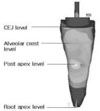
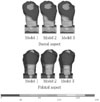
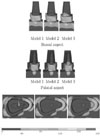

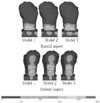
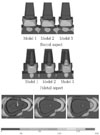

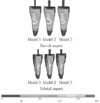


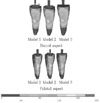




 XML Download
XML Download